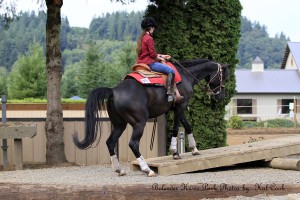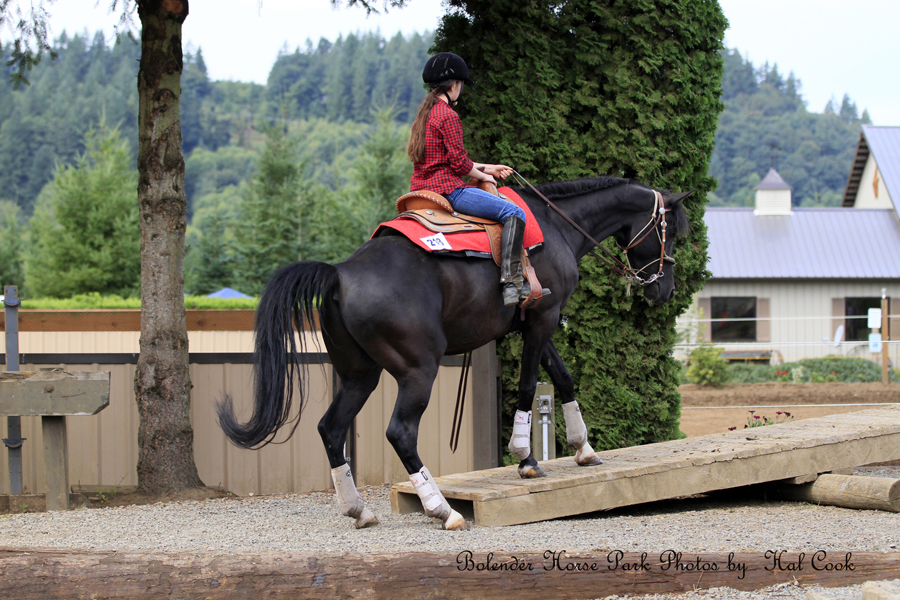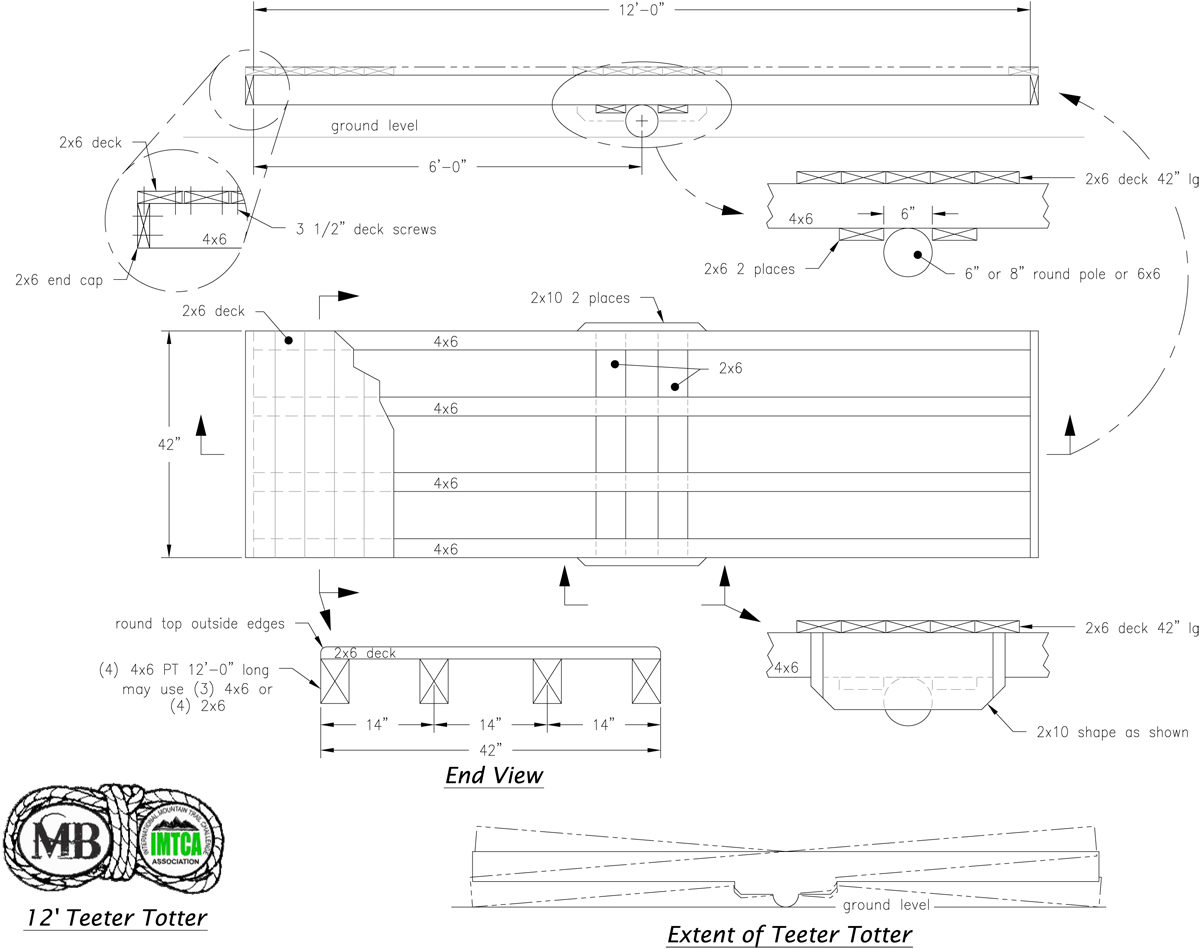Helping the Fearful Horse
by Mark Bolender

Mastering the teeter-totter is, for the most part, a simple task for the horse and will only take a few minutes. However, if it has been improperly taught it can be difficult to correct.
I have had three very tough horses to fix over the last six years. The first one was in Florida where the horse’s owner had spent six months daily trying to get the horse over the teeter-totter yet it was getting worse each day. The horse had become dangerous to the human and itself. This was an attractive, well-bred Appendix Quarter Horse with only one problem: going crazy at the sight of a teeter-totter.
The second one was a 9-year-old Arabian that came to Bolender Horse Park, and the third horse was another nice Quarter Horse in Toronto, Canada. All three of these horses overcame their fear and were able to master the obstacle. I’m sure there are many methods to correct this behavior but here is how I was able to help these horses.
First, the trainer must recognize that the horse is truly scared and not just being stubborn. Horses have an instinct to avoid the unknown, in this case the teeter-totter. This fear creates a strong learned behavior of resistance. The horse’s instinct creates a behavior, which then causes a reaction from the human, which leads to a learned behavior where its intelligence and instinct meet.
As the behavior grows stronger it is solidified in the horse’s mind that this obstacle is indeed a demon since the human’s reactions are the same. Therefore, the handler is unable to correct the behavior. When this is the case, the learned behavior must be broken apart and the pieces put back together.
Start by building a “Bolender Bubble” on the ground. Your bubble at this point must be very strong or the horse will come on top of you when the teeter-totter is presented to it. Once the teeter-totter is presented to the horse, at the slightest indication that the horse is coming toward you, reach out and snap the rope on the horse’s shoulder with your lead rope or other aid. You must put yourself into the role of the alpha mare and stand your ground.
Once the horse realizes this dangerous behavior will have consequences, it will focus on the teeter-totter instead of coming toward you. Let the horse drop its head and inspect the obstacle. The horse will start to paw and chew on the obstacle at this point. Give the horse all the time needed but do not let the horse look away.
The next step is to have the horse step onto it with two feet. At this point all three of my problem horses were shaking head to tail and beginning to sweat. I could clearly see the two instincts battling within the horse—the horse’s instinct to please me and the instinct to avoid the scary obstacle.
Next, build your bubble and your focus and ask the horse to step onto the teeter-totter with all four feet. Depending on how strong the avoidance behavior has become the next step is critical for safety. Ask the horse to step forward to the center of the teeter-totter. Do not let it come off at any cost but give it all the time it needs. All three of the horses I helped were scared to death and were looking to me to see if I would blink or back down. (By now the one horse had become so dangerous that I had to use my horse, Checkers, to help keep the horse in the center of the teeter-totter.)
I did not blink or let down my bubble. My focus was to help the horse conquer its fear and become bold and confident. I continued this exercise until the horse relaxed and walked completely over the teeter-totter.
My next step was to mount up and ride. I repeated the same exercises mounted as I did on the ground and soon the horses were walking over the teeter-totter and seemed to have no memory of the teeter demon.
It’s not easy or pretty to help a horse overcome an avoidance issue, but it is possible. Keep in mind that it’s not about making the horse master the obstacle but about helping the horse overcome its fear and be successful in mastering the obstacles. The obstacles are not to be mastered but they are used to help the horse master its fears.
Happy Trails and Bolender Blessings
Published in August 2016 Issue

Mark and Lee Bolender own and operate Bolender Horse Park in Washington State, which houses the finest Mountain Trail course in the world. They are the founders of the International Mountain Trail Challenge Association (IMTCA) and travel worldwide as clinicians and ambassadors of Mountain Trail. Bolender Horse Park offers riders of all skill levels and disciplines a fun and challenging trail riding adventure.
Mark has designed and built Mountain Trail courses in the USA, Canada, Australia, and Europe—with many more in development. Mark uses his artistic, landscaping, horse training, and construction skills to build these courses (NW Steel Design LLC www.nwsteeldesign.com).
Mark is the author of Bolender’s Guide to Mastering Mountain and Extreme Trail Riding. Visit www.bolenderhorsepark.com to learn more.






